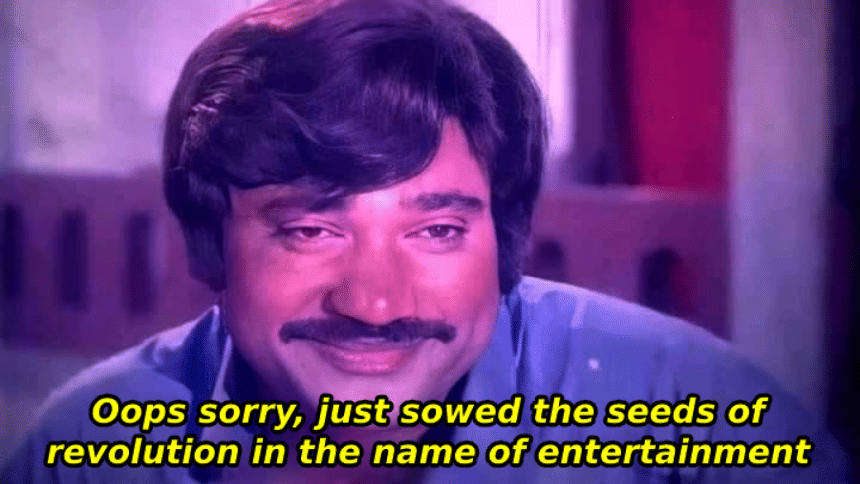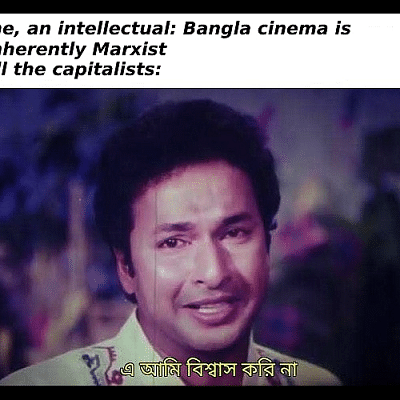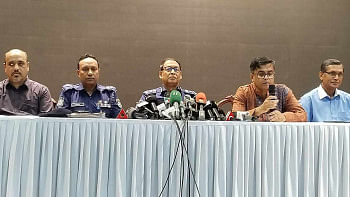The Quintessence of Marxism Captured in Bangla Movies

Many a Friday afternoon has seen my sister and I lounging on our couch, remote in hand, surfing through channels to find something watchable, only to settle for the options in Bangla cinema, mindless entertainment at its best.
There is a lot of Bangla cinema on local channels, especially during afternoons, and all day long on Fridays. After flipping through several of these however, realisation dawns, and you recognise that maybe it's not so mindless after all. You want drama, action, romance, powerful social commentary? Not only do old school Bangla movies have your back, but they have also assumed the responsibility of edification for the masses, which leads me to believe that Bangla movies – at a second glance – are inherently Marxist.
Now, Marxism is an ideology most people are well-acquainted with. But just for the sake of hitting refresh, in the simplest of terms, Marxism deals with class conflict, social hierarchy, and the severely unequal distribution of wealth that is prevalent in our society. It is a political, social, and economic theory in the namesake of German philosopher Karl Marx. At the heart of this ideology is the objective to abolish the division of classes, eradicate the exploitation of the working class and overturning the capitalist regime. All of which, apparently, happens to be the prerequisite to writing a script for Bangla films.
Think about it, the borolok, aka the bourgeoisie, and the gorib, aka the proletariat, locked in an eternal battle of heroism and villainy. The rich are, without fail, evil, narcissistic, and arrogant to the core, taking advantage of and looking down at the poor from their duplex mansions, sneering in their glitzy typecast rich people attire.

While the poor, religiously bearing hearts of gold, immersed in tragedy but eternally hashi-mukh (always smiling), despite the hard work they endure on a daily basis, not to mention their iron-clad sense of dignity. In spite of the extreme depictions of the social classes, the idea itself is transparent; the rich are ruthless and care for no one but themselves, and the poor scrape by on crumbs. Insert plot twist no one saw coming, at all: Borolok and Gorib fall in love (gasp!).
Thus begins a chain of events that eventually brings forth the downfall of the rich. Capitalist villains sit around long tables discussing business and shares and flaunting their billions while the outspoken rickshawala's son woos their spoiled daughter, who overcomes her selfish ways in due time. The climax of these movies portrays the hero, spokesperson of the poor, down-trodden, and alienated, single-handedly defending his honour and the collective worth of the whole working class, symbolising the rise of the proletariat, shaking the superstructure that allows the rich to inadvertently win. Thereby, conveying with every over-zealous thwack of his punches, the fact that the upper social class does not get to call the shots anymore.
The happy ending arrives with an overbearing amount of cheese wherein the rich are humbled and the solidarity of the poor prevail. But the nexus of the plot remains the same; eat the rich. Say what you will about the abundance of over-dramatisation of normal events, the hysterical song and dance numbers, and the stomach-ache inducing romance sequences, but Bangla films are a paragon of Marxist ideology. Whether or not they meant it to be caricatured, is another story.
Jannat is too busy romanticizing academics to actually finish assignments. Knock some sense into her at: [email protected]

 For all latest news, follow The Daily Star's Google News channel.
For all latest news, follow The Daily Star's Google News channel. 



Comments